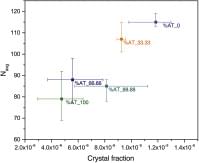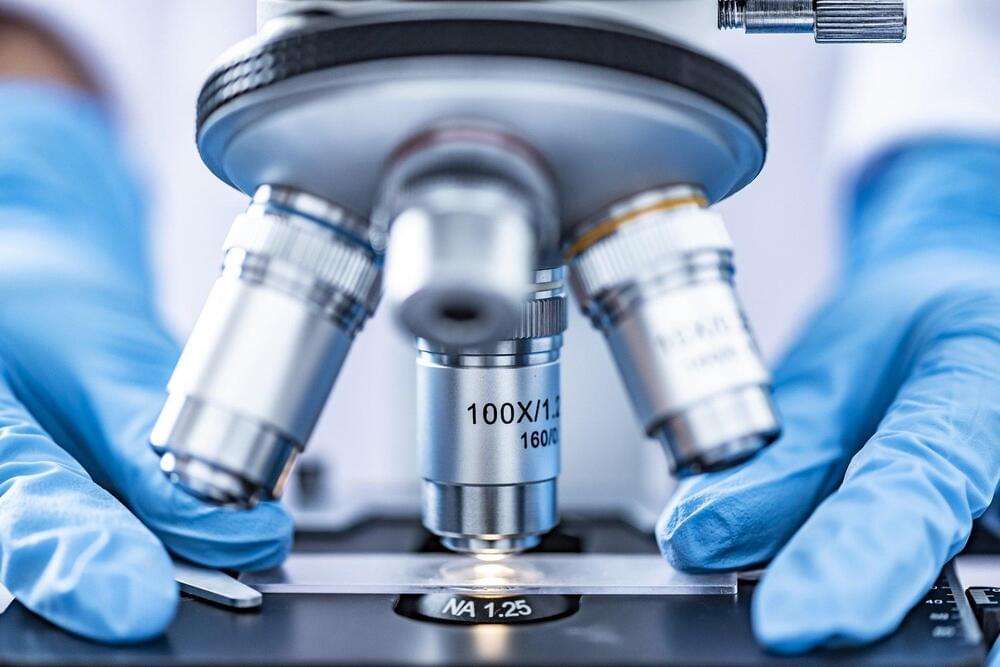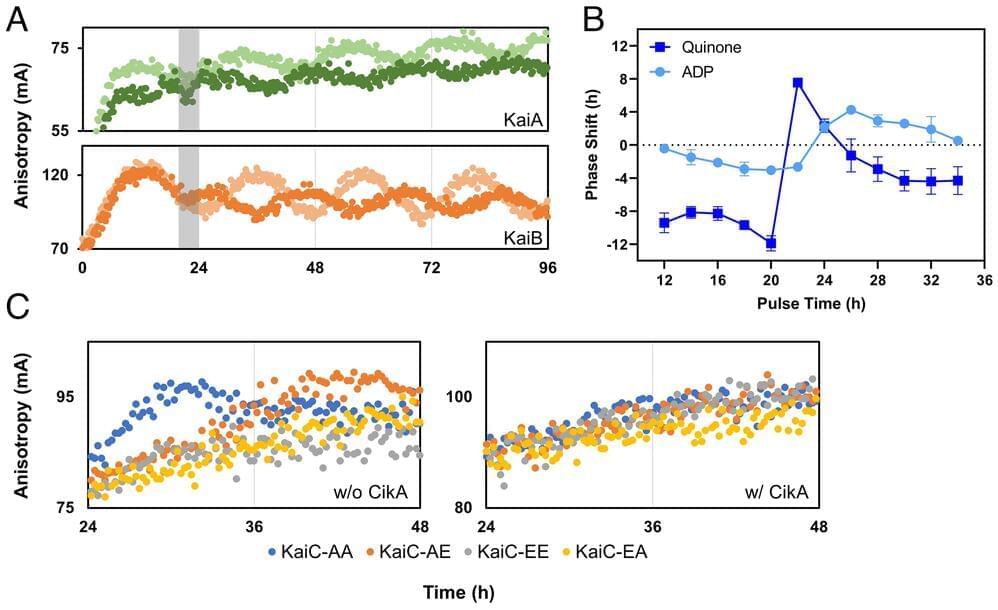Welcome to the Radical Remission Project, the online community created by NY Times bestselling author Kelly A. Turner, PhD, author of Radical Remission & Radical Hope! We are dedicated to continuing research and creating community for survivors, patients, friends, family, and health professionals.
Category: biotech/medical – Page 1,137

Florida fight over ‘baby boxes’ part of bigger culture war
How does this work for the parent when they have a birth certificate but no baby to show for it, and no record of “disposing” of it?
FORT LAUDERDALE, Fla. (AP) — Safe Haven Baby Boxes and A Safe Haven for Newborns are two charities with similar names and the same goal: providing distressed mothers with a safe place to surrender their unwanted newborns instead of dumping them in trash cans or along roadsides.
But a fight between the two is brewing in the Florida Senate. An existing state law, supported and promoted by the Miami-based A Safe Haven, allows parents to surrender newborns to firefighters and hospital workers without giving their names. A new bill, supported by the Indiana-based Safe Haven Baby Boxes, would give fire stations and hospitals the option to install the group’s ventilated and climate-controlled boxes, where parents could drop off their babies without interacting with fire or hospital employees.
The bill recently passed the Florida House unanimously, but there is a long-shot effort to block it in the Senate, where it might be considered this week. Opponents call the boxes costly, unnecessary and potentially dangerous for the babies, mothers, firefighters and hospital workers. Each side accuses the other of being financially driven.

Paul Thomas Anderson: Masterworks
An illustrated mid-career monograph exploring the 30-year creative journey of the 8-time Academy Award-nominated writer and director
Paul Thomas Anderson has been described as “one of American film’s modern masters” and “the foremost filmmaking talent of his generation.” Anderson’s films have received 25 Academy Award nominations, and he has worked closely with many of the most accomplished actors of our time, including Lesley Ann Manville, Julianne Moore, Daniel Day-Lewis, Joaquin Phoenix, and Philip Seymour Hoffman. In Paul Thomas Anderson: Masterworks, Anderson’s entire career—from Hard Eight (1996), Boogie Nights (1997), Magnolia (1999), Punch Drunk Love (2002), There Will Be Blood (2007), The Master (2012), Inherent Vice (2014), and Phantom Thread (2017) to his music videos for Radiohead to his early short films—is examined in illustrated detail for the first time.
Anderson’s influences, his style, and the recurring themes of alienation, reinvention, ambition, and destiny that course through his movies are analyzed and supplemented by firsthand interviews with Anderson’s closest collaborators—including producer JoAnne Sellar, actor Vicky Krieps, and composer Jonny Greenwood—and illuminated by film stills, archival photos, original illustrations, and an appropriately psychedelic design aesthetic. Masterworks is a tribute to the dreamers, drifters, and evil dentists who populate his world.

Homologous pairing in short double-stranded DNA-grafted colloidal microspheres
Homologous pairing (HP), i.e., the pairing of similar or identical double-stranded DNA, is an insufficiently understood fundamental biological process. HP is now understood to also occur without protein mediation, but crucial mechanistic details remain poorly established. Unfortunately, systematic studies of sequence dependence are not practical due to the enormous number of nucleotide permutations and multiple possible conformations involved in existing biophysical strategies even when using as few as 150 basepairs. Here, we show that HP can occur in DNA as short as 18 basepairs in a colloidal microparticle-based system. Exemplary systematic studies include resolving opposing reports of the impact of % AT composition, validating the impact of nucleotide order and triplet framework and revealing isotropic bendability to be crucial for HP. These studies are enabled by statistical analysis of crystal size and fraction within coexisting fluid-crystal phases of double-stranded DNA-grafted colloidal microspheres, where crystallization is predicated by HP.
The intelligence explosion: Nick Bostrom on the future of AI
We may build incredible AI. But can we contain our cruelty? Oxford professor Nick Bostrom explains.
Up next, Is AI a species-level threat to humanity? With Elon Musk, Michio Kaku, Steven Pinker & more ► https://youtu.be/91TRVubKcEM
Nick Bostrom, a professor at Oxford University and director of the Future of Humanity Institute, discusses the development of machine superintelligence and its potential impact on humanity. Bostrom believes that in this century, we will create the first general intelligence that will be smarter than humans. He sees this as the most important thing humanity will ever do, but it also comes with an enormous responsibility.
Bostrom notes that there are existential risks associated with the transition to the machine intelligence era, such as the possibility of an underlying superintelligence that overrides human civilization with its own value structures. In addition, there is the question of how to ensure that conscious digital minds are treated well. However, if we succeed in ensuring the well-being of artificial intelligence, we could have vastly better tools for dealing with everything from diseases to poverty.
Ultimately, Bostrom believes that the development of machine superintelligence is crucial for a truly great future.
0:00 Smarter than humans.
Researchers train ‘world’s most advanced humanoid robot’ Ameca on GPT-4, finds her less responsive
The makers noticed that the processing time with GPT-4 was much longer than GPT-3 and made Ameca appear less responsive with her facial expressions.
In December 2021, we brought to you the ‘world’s most advanced humanoid robot’. Ameca, born of a UK-based company Engineered Arts, displayed a multitude of human-like expressions in August 2022. Now, the developers behind Ameca have released a new video in which the bot can be seen exhibiting its polyglot-like qualities — speaking several languages including Japanese, German, Chinese, French, British, and American English.
Engineered Arts.
This Ameca demonstration used GPT-3 for conversation and translation, DeepL for language detection, and Amazon Polly Neural voices, according to the YouTube description. The team is currently working on a demo using Eleven labs voice cloning which adds complexity, thanks to the additional “phoneme and Visme generation” for lip sync. They will be integrated into the company’s Tritium software platform. And a beta public version will be released in the coming months.

Research uncovers alternate mechanism for producing key protein in metastatic prostate cancer
Like the better-known prostate-specific antigen (PSA), prostate-specific membrane antigen (PSMA) is a biomarker that can tell physicians much about a patient’s metastatic prostate cancer. PSMA is a protein on the cell surface of most prostate cancers; scanning for it with positron emission tomography (PET) can indicate where in the body prostate cancer has spread, and it can be targeted with a newly approved radioactive therapy. In 15%–20% of patients with castration-resistant prostate cancer, however, PSMA production stops at advanced stages of the disease.
In a new study in the journal Nature Cancer, Dana-Farber Cancer Institute scientists shed new light on the mechanism that raises and lowers PSMA expression in prostate cancer cells. The findings may help physicians select PSMA-targeting therapies for specific patients.
It has long been known that the androgen receptor (AR)—a structure that triggers cell growth in response to the hormone androgen—controls the production of PSMA in prostate cancer cells. In the Nature Cancer study, researchers led by Dana-Farber’s Himisha Beltran, MD, and Martin Bakht, Ph.D., found that PSMA expression is lower in liver metastases than in other parts of the body, regardless of expression of the androgen receptor.

Synchronization of the circadian clock to the environment tracked in real time
The circadian system of the cyanobacterium Synechococcus elongatus PCC 7,942 relies on a three-protein nanomachine (KaiA, KaiB, and KaiC) that undergoes an oscillatory phosphorylation cycle with a period of ~24 h. This core oscillator can be reconstituted in vitro and is used to study the molecular mechanisms of circadian timekeeping and entrainment. Previous studies showed that two key metabolic changes that occur in cells during the transition into darkness, changes in the ATP/ADP ratio and redox status of the quinone pool, are cues that entrain the circadian clock. By changing the ATP/ADP ratio or adding oxidized quinone, one can shift the phase of the phosphorylation cycle of the core oscillator in vitro. However, the in vitro oscillator cannot explain gene expression patterns because the simple mixture lacks the output components that connect the clock to genes. Recently, a high-throughput in vitro system termed the in vitro clock (IVC) that contains both the core oscillator and the output components was developed. Here, we used IVC reactions and performed massively parallel experiments to study entrainment, the synchronization of the clock with the environment, in the presence of output components. Our results indicate that the IVC better explains the in vivo clock-resetting phenotypes of wild-type and mutant strains and that the output components are deeply engaged with the core oscillator, affecting the way input signals entrain the core pacemaker. These findings blur the line between input and output pathways and support our previous demonstration that key output components are fundamental parts of the clock.
Ex-Theranos executive headed to prison after losing appeal
Anyone wonder why he might end up serving a longer sentence than Elizabeth Holmes?
Former Theranos executive Ramesh “Sunny” Balwani will be heading to prison later this month after an appeals court rejected his bid to remain free while he contests his conviction for carrying out a blood-testing hoax with his former boss and lover, Elizabeth Holmes.
KTVU delivers the best in-depth reports, interviews and breaking news coverage in the San Francisco Bay Area and California.
Watch KTVU’s newscasts on https://www.ktvu.com/live.
Download KTVU’s news and weather apps for free at https://www.ktvu.com/mobile-apps.
NASA Genius Reveals New Light Speed Engine To Visit Proxima B!
For copyright contact: stienlemane2379(at)gmail.com.
Welcome to Futureunity, where we explore the fascinating world of science, technology, and the universe! From the inner workings of the human body to the outer reaches of space, we delve into the latest and most interesting discoveries that are shaping our world. Whether you’re a science buff or just looking for some mind-blowing facts, we’ve got you covered. Join us as we uncover the mysteries of the world around us and discover new frontiers in the fields of science and technology. Get ready for a journey that’s both educational and entertaining!
Disclaimer Fair Use:
1. The videos have no negative impact on the original works.
2. The videos we make are used for educational purposes.
3. The videos are transformative in nature.
4. We use only the audio component and tiny pieces of video footage, only if it’s necessary.
Copyright Disclaimer under section 107 of the Copyright Act 1976, allowance is made for “fair use” for purposes such as criticism, comment, news reporting, teaching, scholarship, education, and research. Fair use is a use permitted by copyright statutes that might otherwise be infringing.
Disclaimer:
Our channel is based on facts, rumors & fiction.